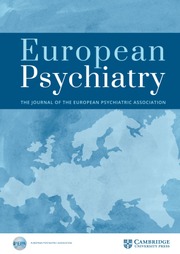No CrossRef data available.
Article contents
Vexatious litigant vs paranoia querulans: A systematic review
Published online by Cambridge University Press: 13 August 2021
Abstract
Paranoia querulans is a type of persistent delusional disorder of the persecutory subtype, recognized under ICD-10 and DSM-IV. Being a classically described entity, evidence is lacking from its conceptualization as a nosological entity to diagnosis and treatment. Furthermore, controversy still exists regarding its interplay between the judicial and mental health systems.
To summarize current evidence and knowledge regarding Paranoia querulans on its conceptualization, ethiopathological explanations, therapeutical management and interface between psychiatry and the law.
A systematic review was undertaken between June and October 2020 in the PubMed, Web of Science and Scopus databases according to PRISMA directive. Key-terms: ((querul* OR vexatious) AND (paranoia OR delusio* OR neuros* OR behavi* OR complai*) OR litig*) AND psychiatry. No language or time restrictions were established.
A total of 1648 studies were initially identified (PubMed: 679; WOS: 945; Scopus: 24; other: 0); after duplicates were removed, n=1381 studies remained. After screening title and abstract, 56 studies were included. Their main content was categorized into: 1. Conceptualization (n=26): Neurosis (n=5), psychosis (n=9), behavioral disorder (n=5); no psychiatric diagnosis (n=7). 2. Descriptive psychopathology (n=8) 3. Etiopathogenesis (n=9): Social or personality basis (n=3), culture (n=4), trauma (n=1), cognitive decline (n=1) 4. Management (n=1) 5. Psychiatry and Law: same object, different objectives (n=12)
There is controversy regarding the nosological entity of querulousness, from psychosis to neurosis or behavioral disorders. Some authors consider this behavior to not be a psychiatric diagnosis. Furthermore, most papers dealt with a social or nurture-based origin. There is a dearth of information regarding treatment.
JPE has received CME-related fees from Lundbeck.
- Type
- Abstract
- Information
- European Psychiatry , Volume 64 , Special Issue S1: Abstracts of the 29th European Congress of Psychiatry , April 2021 , pp. S381 - S382
- Creative Commons
- This is an Open Access article, distributed under the terms of the Creative Commons Attribution licence (http://creativecommons.org/licenses/by/4.0/), which permits unrestricted re-use, distribution, and reproduction in any medium, provided the original work is properly cited.
- Copyright
- © The Author(s), 2021. Published by Cambridge University Press on behalf of the European Psychiatric Association





Comments
No Comments have been published for this article.